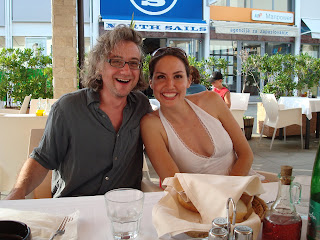
Taja met us at the “American Corner” at the University, a room full of American periodicals, books, and media.

Taja talked about her work as an anthropologist and poet. She read her poems and talked about the work she does uncovering voices of Slovenian women writers from the past, those whose works have been largely ignored in Slovenian culture, which, like America and much of Europe, has an inborn patriarchal structure.
My notes from her talk are mostly fragments that no longer make sense out of context. I wrote in my notebook, “to stand somewhere, not move with currents.” This might have referred to her discussion of moving from Lubljiana to Koper, though in some ways I prefer it to remain a mystery. I also wrote down the name, Sasa Vegri, who I believe is a Slovenian poet. I wrote down a detail about her father working as an assistant to a nurse in a lab during WWII like Primo Levi the chemist. I wrote down “science as refuge.”
I wrote down this fragment from one of her poems:
“The earth claimed her mother…the sky stole her father.”
Her work has been translated into eleven languages, and now I’m search of the English (though perhaps I will have to learn Slovenian just so I can read more of her work!)
She took us on a tour of the university—the main building used to be a prison and some of the details from the original building were kept and repurposed in the new building:

She showed us the library, which was beautifully designed with cube shelves and a staircase of wood and glass:

After the tour, she led us again into the streets of Koper for dinner. Here she is walking just ahead of me and talking to Wendy:

And here she is again at dinner with some of us, just steps from the water:

At some point that day or the day before, Nick Benson, another poet, and I made the discovery that we went to the same high school!! What are the odds? Two grads of Exeter who both attend Vermont College and both decide to go on the trip to Slovenia in 2009. ??!!? So we decided to use the Koper setting for a pic to send to the alumni bulletin. It took a few times to get a good one.
Stop laughing Nick!

No seriously….
Now I couldn’t keep from laughing.

Okay, once more now:

Done!
On the way back from dinner I took a picture of Nick and Glenn next to a memorial statue. They were not actually trying to imitate the statue, but the resemblance is curious:

Here is a view of the coast away from the big barges and ships:

Here is a picture of captain and co-captain of the white van:

Here is a picture of the whole crew from the rental car caravan:

























